Osteochondrosis and its business partners. Medical history
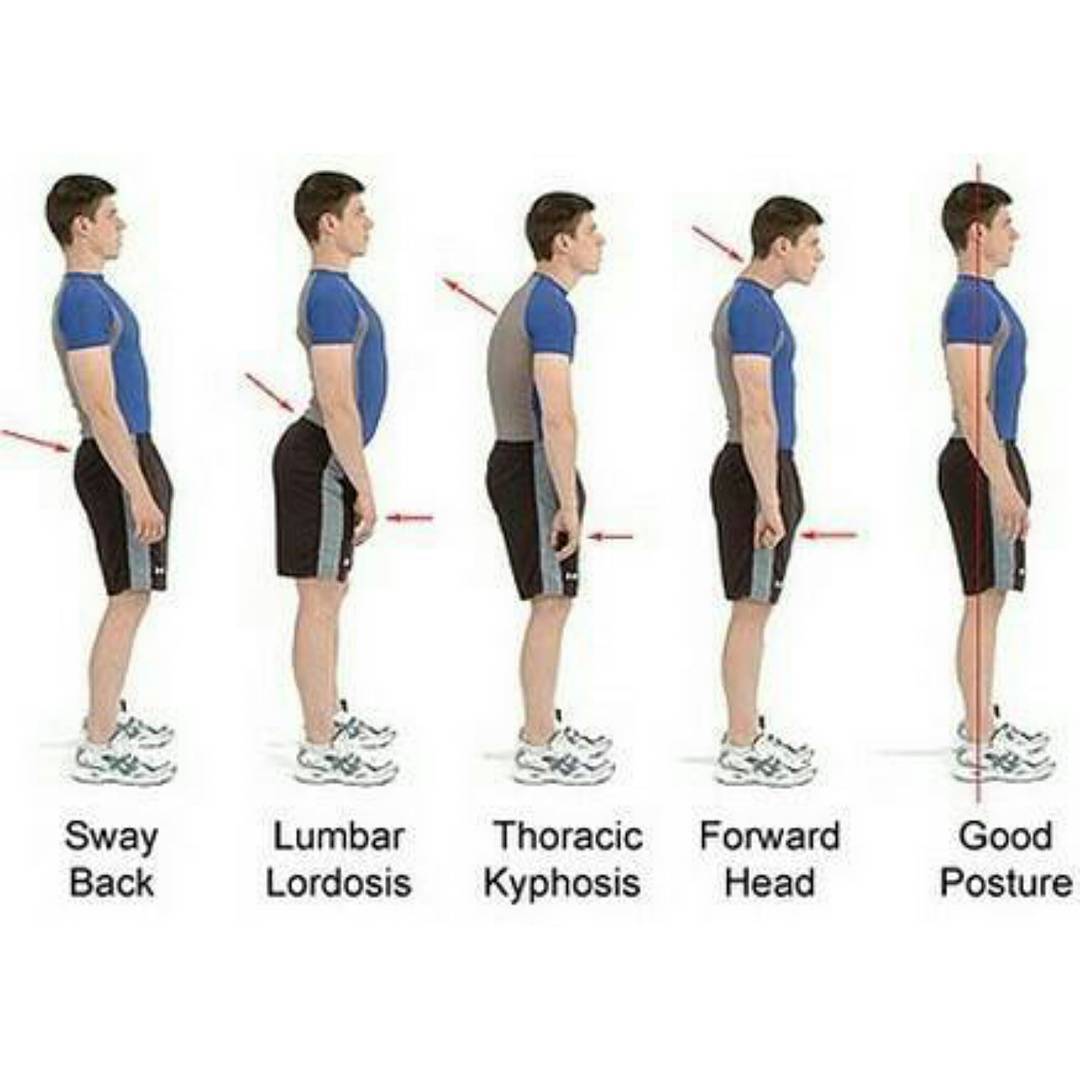
Hello (This is important!) Dear reader.
If, reading this article, you put your hand to your face and bent your back, then in this article you can look at your possible future. My disease developed more in a traumatic scenario, in 3-4 months the loin was severely deformed, and then, like a house of cards, the entire spine deformed, for a year, I became aware of problems in each joint: from the knees to the 1st spinal bone, after which the spinal cord goes to the head.
Spinal pathologies have one unique feature that no other disease has. Any spinal pathology is very heavy ... In the literal sense, a person’s bone mass is about 15 kg., And any problem in the joint has a large physical size and very often the problem in the joint can be felt with fingers, and modern diagnostic tools even allow you to look inside (MRI, X-ray). Therefore, it is unlikely that a person has the same organ, with equally clear functions and ease of observation as the spine.
In this article, you will learn about the difficulties of making a diagnosis, the limitations (specialty) of any doctor, how the spine can press on the heart (and not only), how blood clots appear, how ischemic brain stroke can develop and a small mathematical description of the conflict between a doctor and a patient.
I think, first, briefly talk about what happened before the discovery of a serious problem. Now I am 26, I have always been keen on physical education as well as artists are fond of probability theory about 5 years ago, my friend and I ran in the mornings at the stadium, it lasted for half a year, and then I didn’t do more systematic physical training. My job was not dusty, on average of 10 working hours, for work I was busy for 2 hours (communicated with clients, dragged boxes, etc.), for the remaining 8 hours I was busy with another important function of my work: I was waiting for the next client . I could do anything, and I sat at the computer. This way of life, according to my personal assessment, made a ~ 30% contribution to the severity of the illness (although, of course, a “trauma” probably would not have appeared with a different lifestyle, and without a “trauma”, life would not lead to such consequences)
~ 3 years ago, parents took loans, started building a house in the country, for a year they brought it more or less to a viable condition and moved into it, and I moved to a large room, on a bed with an old mattress. The first week after sleeping on this mattress, my back ached terribly (by the way, after 3-4 hours of lying on it, my back ached before, and I and some guests), I thought that in time I would get used to it and in 2-3 weeks back really stopped hurting in the morning. And after 3 months, I suddenly found that I could not bend forward much. The maximum forward bend was ~ 30 degrees from the vertical, with an intensified attempt to bend forward, there was no pain in the muscles, and the support on the bone was felt. Feeling the lower back, I found a strong bend forward. The approximate condition of the loin can be seen in this picture.
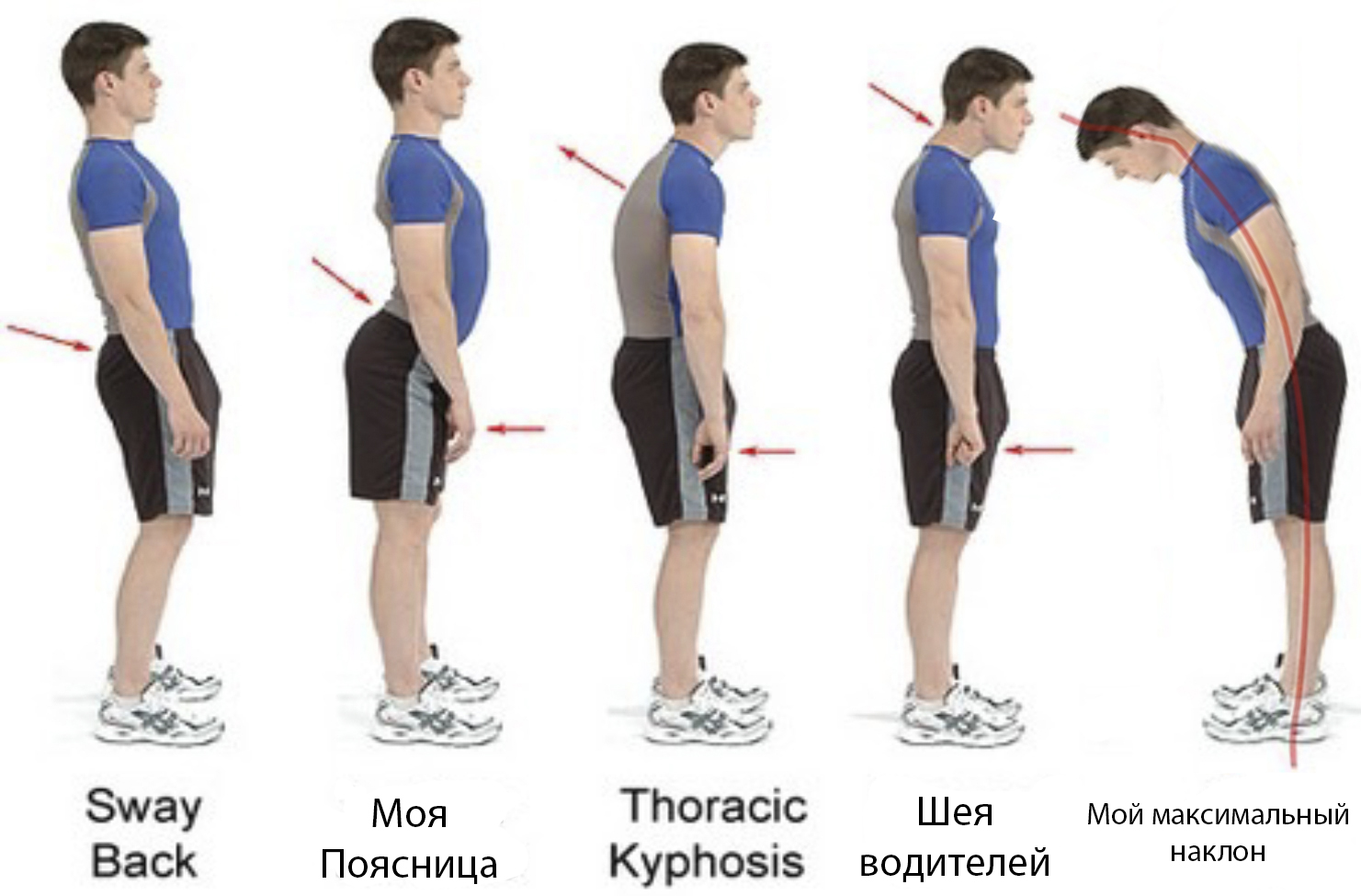
The difference is that in the picture a person curved a healthy lower back, but in me it was bent with a deformation of the joints, and a little less than in the picture. The first 5-6 vertebrae were completely blocked by me and did not move, in fact, these vertebrae in function became similar to a single bone, i.e. moved, only synchronously without changing their position relative to each other, and the lumbar muscles that control them were left without work (as it turned out, other muscles began to compensate for their work with less efficiency and, as a result, with a greater overall load). Naturally, I had to do something with the mattress, and I laid a wooden plank on it from the old bed, and on top I laid a soft pad thick with 2 blankets. It turned out that the lower back, lying on a flat surface, did not touch the bed at all (the first 4 vertebrae) and the entire weight of the lower back and partially the pelvic bones crushed the sacrum (as a child, the sacrum looks like 4 vertebrae which by 30 years fully fused).
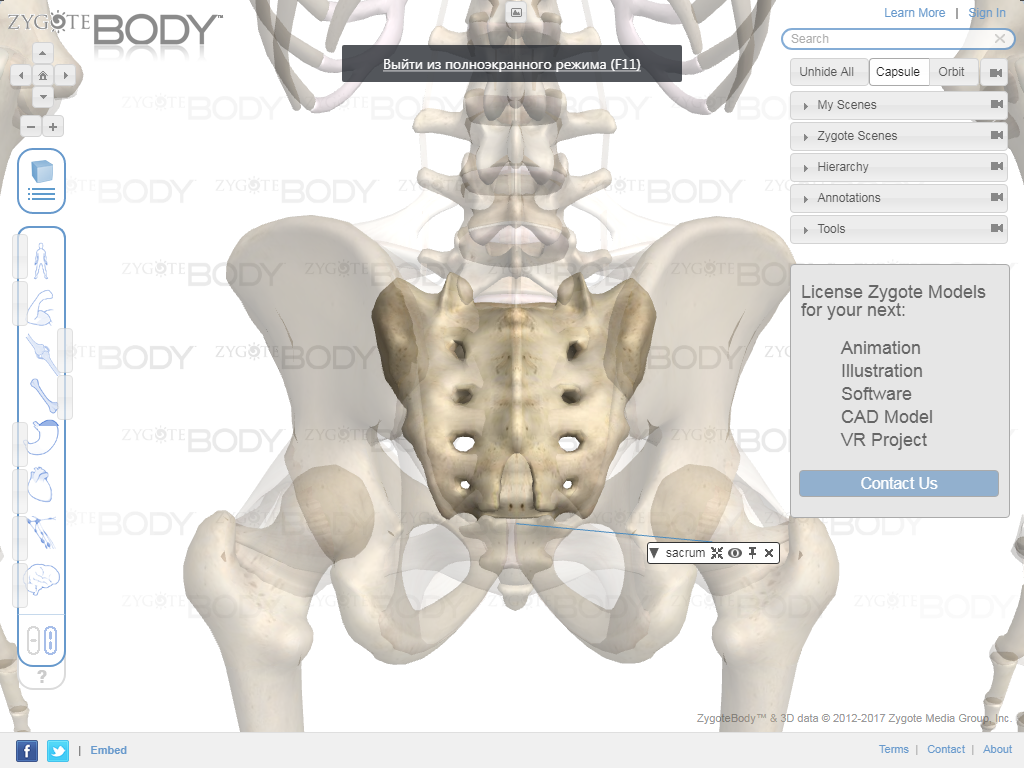
For the first 6 months, my attempts to straighten the lower back with exercises, hanging on a horizontal bar, etc. did not lead to anything, the loin remained in a stably bent state. A small digression. I remember in my childhood, when I was 7-8 years old, I was in the hospital, something was hurting me and the doctor came up to me and asked: - what kind of pain? Stitching? Cutting? Aching? Burning? Then I could not answer for a long time, because I could not compare my pain with the other three unknown to me. And over the next 3 months of unsuccessful attempts to straighten something, I became acquainted with all four types of pain. After 5-6 hours in a sitting position the cutting pain began, the pain subsided, if not sitting and spending the day standing / walking, then in the evening there was aching pain in the joints. If in the evening the pain was cutting, then at night without a load a burning pain appeared in the sacrum closer to the tailbone, the first couple of times I didn’t even understand what was happening, I jumped up with the thought that I had burned and inadequately rubbed the place where I had “burned myself”, once such burning pain was voluminous in 3-d, felt as a line about 2 cm. upward, slightly upward slightly deviated from the vertical, the burning sensation was around this line.
Near work I had a thick double tube on which I could very comfortably hang upside down, I hung 2-3 times a day for 5 minutes, a pleasant feeling of relaxation appeared in the lower back, but there was no crunch in the joints and everything remained the same position By that moment I had already understood for a few months what kind of a disease it was and who treats it. According to the history of the disease, it was clear that if the joints in a certain position were bent to one side, then there should be a position in which they would bend back. I needed a man who knows how to bend the spine, once I saw a terrible video on YouTube, there was some blind clairvoyant chiropractor, curatively twisted his hands to a person, pulled limbs in random directions and other horrors for 60 !!! Minutes, I needed a similar person, only a seer, a doctor, and so that on the territory of the hospital. It turned out that doctors with such functions call themselves manual therapists. I found such a doctor in the Regional Hospital (in the Sverdlovsk region) - this is a large 8-storey hospital, where, if not there to look for good doctors.
I recorded on the Internet at the reception at 10 am and went to the doctor. Upon entering the hospital, I immediately enjoyed the genius of the manual. So, imagine yourself in the place of the head physician. You have 200 rooms with doctors on average serving 1 patient per hour * room (maximum 200 patients per hour). Some doctors have more patients than they can take (there is a queue), others have less (almost no queues) and you need to do so - that a person would enjoy the queue, regardless of whether his doctor is in demand or not. The solution is brilliant - you just need to get rid of all patients after 12 checkout chambers with an average service time of 6 minutes (120 patients per hour maximum). After registration, you get to the cashier, of which 20 pieces with the same capacity (6 minutes * person), it would seem - how can you create a queue at the cashier’s desk if they can serve more people than they can get to the hospital? But there, too, not fools work, you just need to divide the cash registers into departments - then 70% of cash desks will be empty for unpopular directions, and there will always be a half-hour queue for MRI and X-rays.
The doctor interrogated me, felt in the neck, pressed somewhere, something snapped and became very easy in the neck, then he opened the book where a muscle man was drawn, said that the muscles of a 30 kg man are somehow connected with them Glycine and it should be drunk. He sent me on an x-ray, looked at it and put me on a couch, sat down near my head and started meditating, tapping my fingers on the temples, it lasted 20 minutes. Naturally only grandmothers of 50 years go to him, probably they are so fashionable. Then I rolled over on my side, he pushed his shoulder, his loins crunched and became smoother and closer to the couch. I arrived at the hospital at 9:45 by appointment at 10 am, 20 minutes for the first session, 40 minutes for the second, 10 minutes for an x-ray. Total from the hospital I left at 14:00.
In total for a month I went to him 5 times, losing weight by 2 kilorubles in 30 minutes, and with each session the joints crackled less and less, and he prescribed more glycine. At the last session, nothing broke at all, and he gave me Glycine 10-15 pills a day and advised me not to watch TV. After Glycine, the pain did indeed become less, but it was clear that the joints would not straighten from these tablets.
The next 2 months I tried unsuccessfully to repeat the exercises that he did to me (and indeed not a single exercise of what the professionals did - I could not repeat with the same effect), I still had a booklet on which I did gymnastics - something it crunched, but not in the lower back. Over time, the aching pain appeared more and more often and became stronger. Trying to reduce the load on the lower back in a sitting position, I began to lean my elbows on the table, this caused my chest to hurt - in the end, something snapped and began to deform the neck. At first, there was a feeling of a coma in the throat - when swallowing, an “obstacle” was felt, the vertebra was mobile and when pressed, it moved inwards (the 7th vertebra from the head, or the first from the chest). After 2-3 days, the higher vertebrae began to crunch. The neck began to move forward to the state - "like the drivers." The spine then began to look something like this.
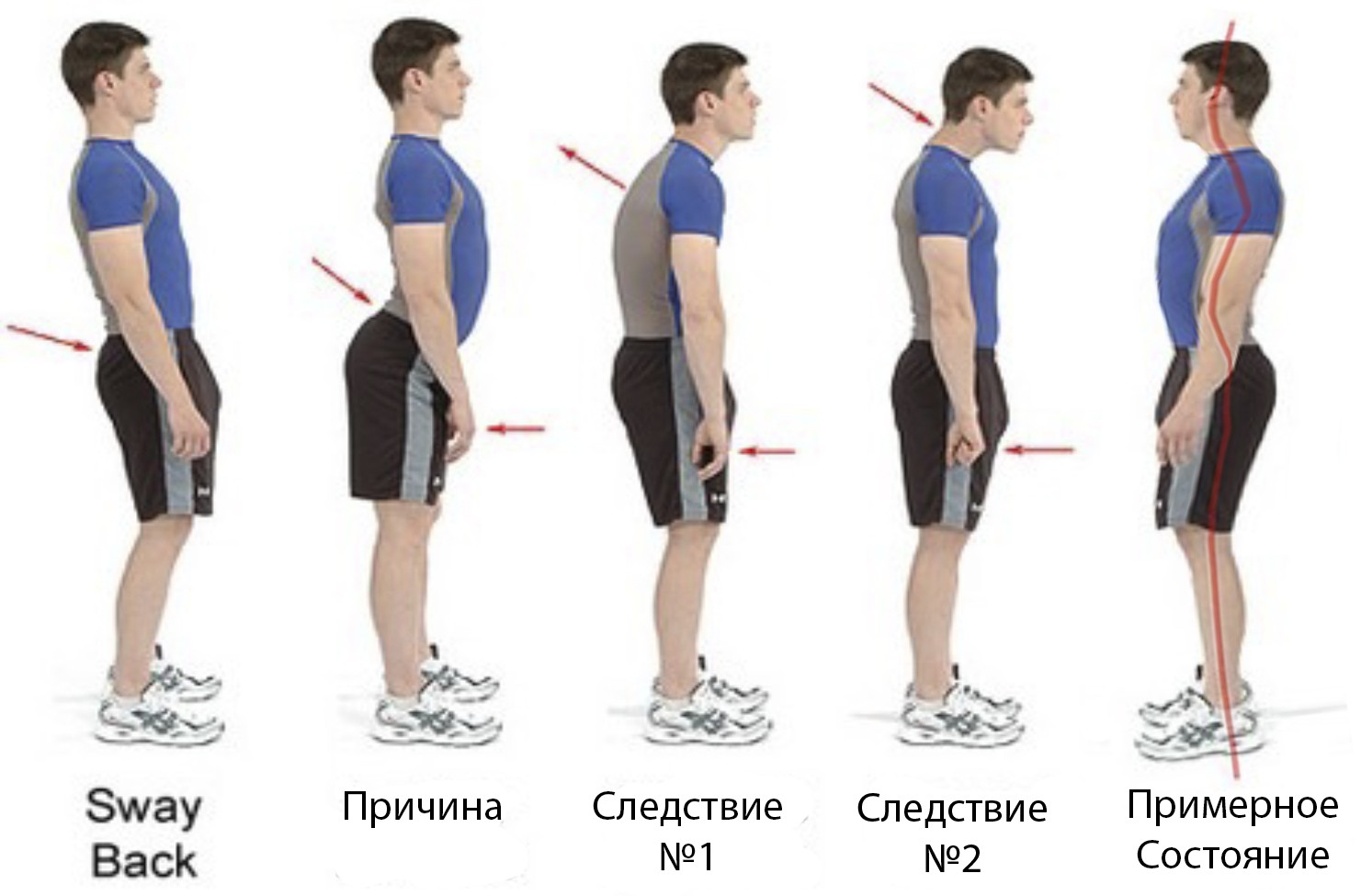
In fact, I had all 4 pathologies, but less curved than in the picture. In Photoshop, bend your healthy back turned clumsily, and it is hardly possible - the height of the vertebra is about 2 cm, the offset of 5-7 mm is already a lot, 10-12 healthy vertebrae form a bend of 5-7 cm. It is unlikely that you can see in the picture a deviation of 2-3 cm. I will try to describe schematically, this will require a little anatomy.
Curvature of the spine is divided into 3 types:
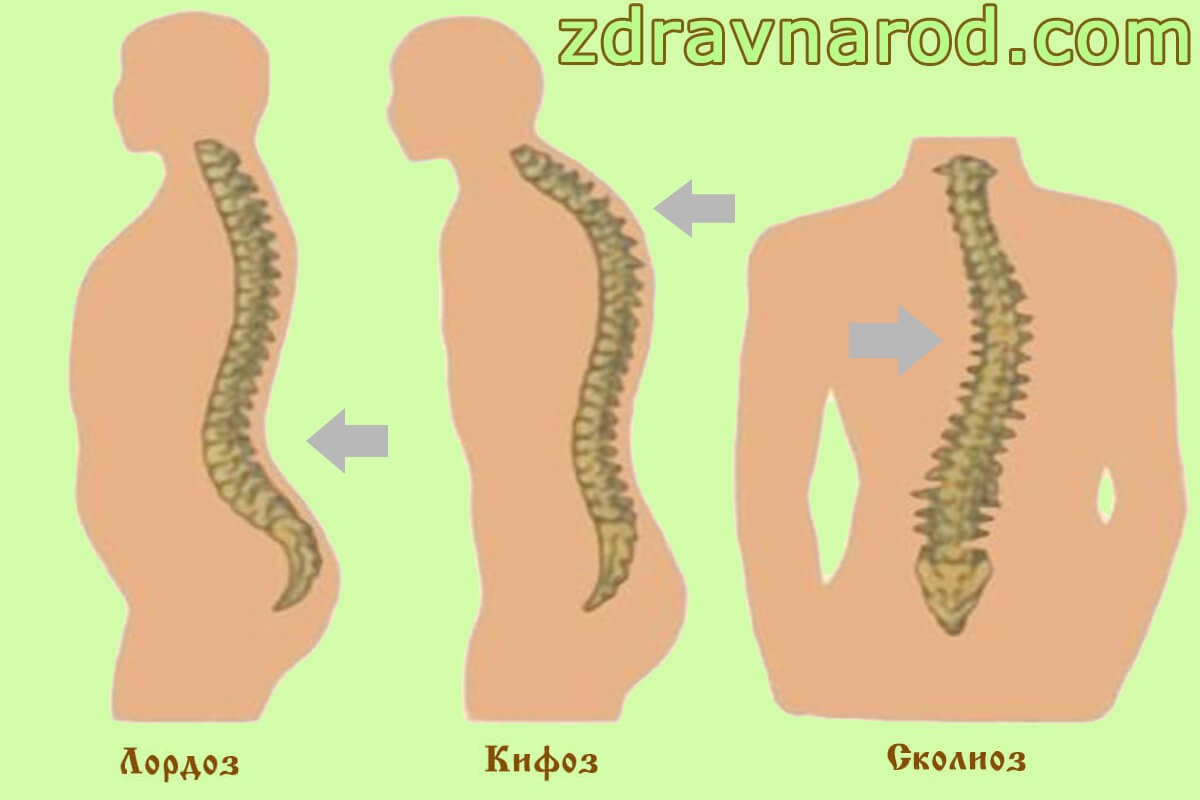
In a healthy state, a person has both lordosis and kyphosis, the function of these curves is simple to understand - the rib cage is in front of the spine, therefore, the center (line) of gravity is outside the spinal column, bending displaces mass and provides opportunities for adaptation - for example : if you carry a child or just prefer to store a six-month supply of fat right near the stomach, then by increasing the bend of the spine you can shift the center of gravity and remain upright. If you often carry loads of 20-30 kg., Then you are more likely to have a minimally curved back.
But there is no scoliosis in a healthy spine, because there is no asymmetry (in mass) between the left and right side of the body. Asymmetrical loads (bag on the shoulder) can provoke your spine to uncontrolled adaptation, although most of the reasons are deeper. Personally, in my case, scoliosis creates 3-4 times fewer problems than hyperlordosis / kyphosis, but scoliosis is much easier to understand anatomically, so let's first deal with it. To understand the harm of scoliosis, take a look at the comparison picture.

The main problem of this position of the vertebrae is a reduction in the area of effective support, and therefore an increase in the pressure density on the intervertebral disk. If you describe it functionally, the structure of the intervertebral disk is as follows: in the center there is a liquid (incompressible) that evenly distributes the pressure, for example: if you put a balloon with water and press your finger with a force of 1 kg on any side, the pressure from the inside will evenly split over the entire area walls of the ball. In the case of the spinal column, there is a rigid bone above and below, and on other sides the fluid inhibits the fibrous ring. The above is about 80% of the composition by weight, and 20% of the complexity, inside the intervertebral disk there are still a lot of biological structures with feeding and control tasks.
Let's return to the pressure, in the last picture you might have noticed that in such an organization the vertebrae should “roll” in different directions, this problem is dealt with by the second part of the musculoskeletal system - the muscles. Directly into the vertebra firstly grows into a tendon (ligament), which cannot contract and performs the function of a rope, after some distance it turns into a muscle. Any muscle can be controlled in 2 modes, consciously (by the brain) and unconsciously (also by the brain, but the spinal cord). In the unconscious mode - if something starts to stretch the muscle (pressure from the side, also stretches the muscle) - the muscle tenses, trying to maintain its length. Another muscle or a bone can press / pull, for example, when the trunk is bent to the left side -> the right side of the spine becomes longer than the left -> muscles begin to counteract the stretching by pressing the right side of the vertebrae to each other, increasing the pressure area (reducing the load density) on the intervertebral disc.
The same can happen with scoliosis, with curvature, the convex side begins to strain the muscles, and the concave side, on the contrary, relaxes.

As can be seen in the picture, the muscles oppose scoliosis, but certainly not for free. Tightening the muscle increases the pressure on the same intervertebral disc. To my surprise, a person’s muscles turned out to be very strong, for example, a 100 gram jaw muscle (as thick as approximately in the picture) is capable of creating a load of 60 kg, and indeed you could see people hanging only on bent fingertips. Here another problem arises, as seen in the picture, in a stationary / sitting position, one muscle should be strained more than the other, if you read this article in 2068 and have already upgraded your spinal cord with a processor capable of calculating and distributing loads with an infinite Accuracy in real time - you can sleep on anything and somehow - your muscles will balance everything in the morning. But if you are going to manage 10 kg. Muscles (about as much as all muscles in the lower back weigh) are 2 kilograms of pale gray substance of unknown origin, then you will definitely get errors - if one muscle strains more than necessary and starts to pull the spine, then the other will also have to increase tension, and she makes a mistake then the cycle will repeat. Thus, sooner or later, one of the muscles will reach maximum tension and create a load on the intervertebral disk of 60 kg. Perhaps that is why the spinal curvature is always accompanied by hypertonicity of the muscles, personally, in my worst states, about 70% of the muscles from the calf to the neck along the spine were in hypertonia.
Naturally, much larger muscle groups can participate in balancing. For example, the broadest muscle of the back - which is attached to more than half of the vertebrae (spinous processes), from the very last vertebra of the sacrum, to the 4th vertebra of the chest, and attached to the humerus.

As you can see, when straightening scoliosis, this muscle will begin to pull down the left shoulder, the left rhomboid muscle will react to this and will begin to press the scapula to the spinal column if the right side does not balance the tension (and it cannot do this, at least by symmetrical tension muscles, asymmetric tension will give side effects in other places), then the chest will begin to copy scoliosis of the loins, also increasing the load on the spinal column. There is one more critical difference in the conditions, compared with the previous, close pressing of a vertebra to a vertebra - the fact is that the lumbar vertebrae are designed for a large load (after all, they have more bones / muscles on them than on their shoulders, which have only their heads on top) thus a strong loin places a strain on relatively weak shoulders.
Obviously, the spine is constantly adapting to the changing center (line) of gravity. For example, if you displaced 1 vertebra in the anterior-posterior direction, then other vertebrae must necessarily balance such an offset - this can be done by the 2 nearest vertebrae or 15 - each by a little, or you can just bend your knees slightly. At first, there are stable (balanced) combinations and adaptation stops, but only for a while, roughly speaking, if you have 2 vertebrae concave and squeeze the left part of the intervertebral disc, then very hypothetically, you can straighten these 2 vertebrae, while bending 2 higher vertebrae so you can walk until the next intervertebral disk is worn out like the previous one and then you have to look for another stable state. Between stable conditions, the spine can be in a dead end state, with bending / alignment - the length of the spine changes, it often happens that the muscle is stretched to its full length and cannot contract. With scoliosis at the level of the chest, the ribs begin to converge / diverge.

The child in the photo is an extremely neglected case, moreover, scoliosis in the growing spine will necessarily change the shape / symmetry / size of the vertebrae themselves. Personally, in my case, the properties of scoliosis in the chest appeared not rarely, but weakly, for about 2 weeks in a row I felt for pain in the joints of the ribs (they did not hurt themselves), then something changed in the lower back, during the week the rib cage recombined and the pain disappeared. For half a year, my heart ached, the above-described Shaman in a white robe told me that his ribs could crush.Most often the lungs suffer, once, at a certain position, I hit a lung and started to have a strong reflex cough. The last month (~ 1.5 years later, as I can walk for an average of 2-3 hours and sit for 20-30 minutes in a row), the symptoms appear as in the picture, the left shoulder pulls down, the rib goes forward, and the scapula moves down.
In my case, most of the problems appeared in the front-rear direction. Imagine that the first lumbar vertebra in a healthy spine extends from the sacrum with an inclination of ~ 20 degrees from the vertical, the second 10, and the third is directed exactly vertically. Now imagine that because of the displacement, the first vertebra began to come out at an unnatural angle of 40 degrees. Since the angle has changed “traumatic”, the nearest vertebrae cannot bend to the same position and compensate for the inclination without damage - because of this, the lumbar lordosis will end 2 vertebrae later, the thoracic kyphosis will also shift higher. The lower cervical vertebra in a healthy state deviates from the vertical by ~ 25 degrees. If you do not compensate for the bend in the waist, then the slope of the neck will also increase. Between the neck and the sacrum 17 vertebrae and by joint efforts they can compensate for such a bend,but it is difficult and takes a long time. Unfortunately, there is a simpler version, any vertebra can be bent into the opposite “traumatic” position and compensate for the entire inclination.
Still a lot of problems arise from the fact that during recombination the spine can turn out to be in bad combinations, or in terrible ones. For example, one of the bad combinations in the chest.
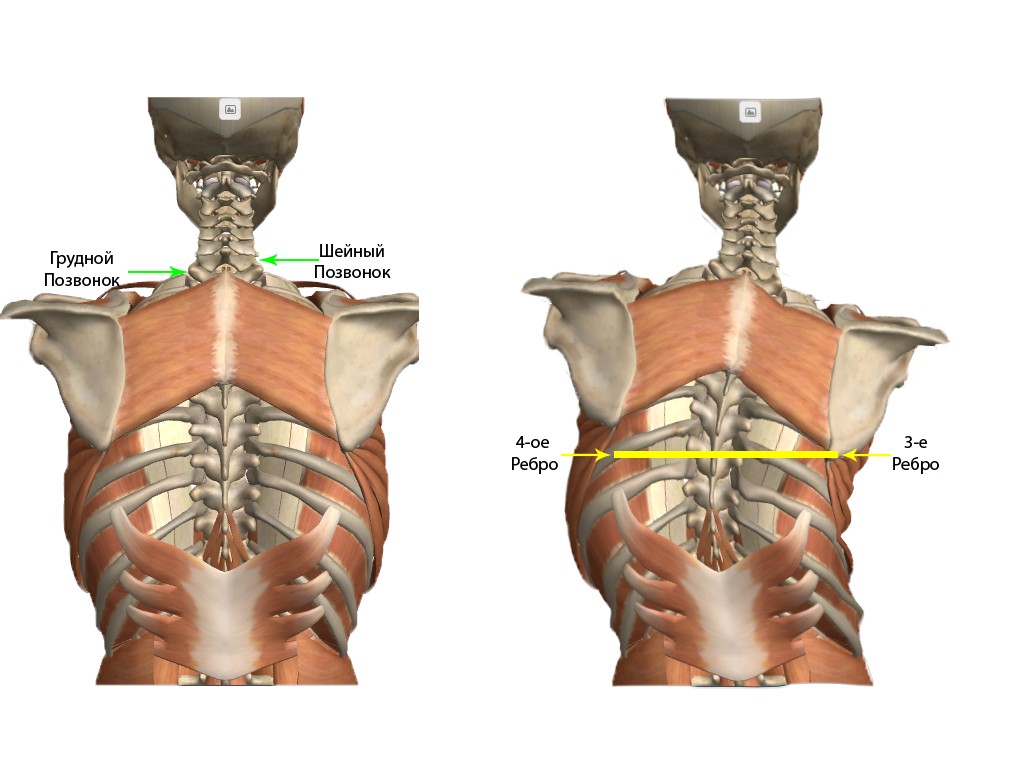
As seen in the picture, with curvature, the left / right edges change their height in opposite directions and it is likely that when a symmetrical load on the shoulders, different muscle groups begin to work, and instead of pulling one vertebra in opposite directions, the muscles will pull 1 a vertebra in one direction, and a higher vertebra in the opposite one. With any small curvature - the muscles will pull the upper part of the vertebra in one direction, and the lower in the other - rotating it, which will create asymmetric pressure on different sides of the intervertebral disk. If it seems to you that this is just a probability, then this is not so - you have to play this lottery every second and this combination is just a matter of time. Such asymmetry can occur at any height of the chest, and since the shoulders are subjected to constant loads,then they will be the fastest in this position.
Separately, it is possible to live with each of these three problems for decades until they lead to tangible consequences and become noticeable, in my case, all these 3 problems crossed in the shoulders. Contraction of the back muscles of the lower back would mean an increase in the angle of the deformed joint, all the work on balance was undertaken by the front muscles, which eventually pulled the front of the chest down, in total with the late kyphosis of the chest, the front muscles of the upper rib were lower than the back ones and began to press on different vertebra levels. And in the end they turned it, the vertebra in fact stood on the ribs (15-20 degrees from the horizontal on each side). When the neck was bent forward, between the 1st and 2nd vertebra of the chest, a large depression appeared at the back, the rhomboid muscle, under tension, began to press into this depression,since the vertebra was tilted, in fact, the muscle began to push it forward and slightly upward, creating additional rotational force. Above, the inclination of the lower vertebra of the neck, which is practically unable to resist the “rolling” of the vertebra, increased significantly. There are no lateral points of support in the neck and all the muscles are directed only up / down, moreover, the neck basically has muscular asymmetry, most of the muscles are located behind (the throat is in front and they would squeeze it when stretched), therefore throat.moreover, the neck basically has muscular asymmetry, most of the muscles are in the back (the throat is in front and they would squeeze it when stretched), therefore the throat has become an important point of support from the dull rolling of the neck.moreover, the neck basically has muscular asymmetry, most of the muscles are in the back (the throat is in front and they would squeeze it when stretched), therefore the throat has become an important point of support from the dull rolling of the neck.
Naturally, all of the above that happened between the lower back and chest began to occur in the neck. Deformation of the joints in the neck creates much more serious problems. As you know, the brain consumes 20% of oxygen and therefore a huge number of vessels pass through the neck, the muscles also fall into the hypertonus and can pinch them. Another serious problem is that the displacement of the vertebrae naturally stretches / squeezes the spinal cord.
By that time, about a year has passed since the first severe back pains appeared. Then problems at work began to appear, I could no longer sit because of my waist, my neck was beginning to roll, and headaches began to appear. It was a very difficult psychological time, and naturally I didn’t even know about anatomy at that time. The only thought that visited me was that what was going to be worse, and then it became really worse, and the psychological effects turned into psycho-physiological.
In the next article, I will talk more about the pain. As it is known, the brain cannot be fundamentally sick, and this is true, what happens when a spinal cord is squeezed is not pain.
Next part
All Articles